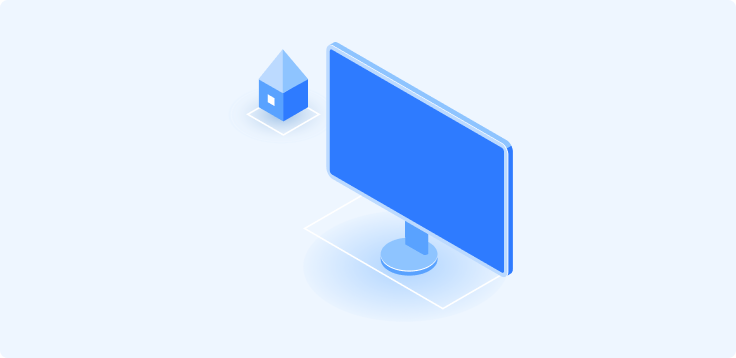Aug 28, 2024
The Role of Proxies in AI Training: How to Collect High-Quality Data Efficiently

High-quality data remains a steady constant and need In the ever-evolving landscape of artificial intelligence (AI). Without a steady stream of accurate, diverse, and relevant data, AI models can’t reach their full potential. But how do you collect this data efficiently, especially when it's spread across the vast expanse of the internet? Enter proxies—a powerful tool that can make your AI training data collection process not just easier, but far more effective.
What Are Proxies and How Do They Work?
Before diving into their role in AI training, let’s start with a quick refresher on what proxies are. A proxy server acts as an intermediary between your computer and the internet. When you send a request to access a website, the proxy server intercepts that request and forwards it to the web. The website then responds to the proxy, which passes the data back to you. And so on, and so forth until you get what you need for your proxy projects.
In essence, proxies mask your IP address, making it appear as though your requests are coming from another location. This is incredibly useful for various tasks, from maintaining online privacy to accessing geo-restricted content. But one of the most significant uses of proxies is in data collection, especially when it comes to training AI models.
The Importance of High-Quality Data in AI Training
AI models are like sponges—they absorb vast amounts of data to learn and make predictions. The more accurate and comprehensive the data, the better the AI performs. However, gathering this data is no small task. It involves scouring the internet for relevant information, often from multiple sources. This process, known as web scraping, is where proxies truly shine brightest.
Why Proxies Are Essential for Data Collection in AI Training
When collecting data for AI training, proxies serve several important, even crucial, functions:
1. Avoiding IP Blocks: Websites often have mechanisms to detect and block IP addresses that send too many requests in a short period. This is to prevent abuse and ensure fair use. However, when you’re trying to collect large datasets, these blocks can become a significant hurdle. Proxies allow you to distribute your requests across multiple IP addresses, making it less likely that you’ll be blocked and more likely to be granted access.
2. Accessing Geo-Restricted Content: Sometimes, the data you need is only available in certain regions. For example, a website might display different content based on the visitor's location. Proxies can help you bypass these restrictions by routing your requests through servers located in the desired regions, giving you access to the data you need.
3. Maintaining Anonymity: In some cases, you might not want your data collection activities to be easily traceable back to your organization. Proxies provide a layer of anonymity by hiding your true IP address, making it harder for anyone to track your actions online.
4. Improving Speed and Efficiency: By distributing data collection tasks across multiple proxies, you can speed up the process significantly. Instead of sending all your requests from a single IP address, you can use proxies to send them simultaneously from different locations, reducing the time it takes to gather large datasets.
Types of Proxies and Their Uses in AI Training
Not all proxies are created equal. Depending on your data collection needs, different types of proxies might be more suitable:
- Residential Proxies: These proxies use IP addresses assigned by Internet Service Providers (ISPs) to real homeowners. They’re ideal for accessing websites that are sensitive to bots and automated requests, as they appear more legitimate.
- Datacenter Proxies: These proxies come from data centers and are not affiliated with any ISP. They’re faster and more cost-effective than residential proxies but may be easier to detect by websites.
- Rotating Proxies: These proxies automatically change the IP address after each request or after a certain period. This is particularly useful for large-scale data collection, as it further reduces the chances of getting blocked.
- Static Proxies: Unlike rotating proxies, static proxies keep the same IP address. These are useful when you need consistency in your data collection, such as when tracking changes over time on a specific website.
Best Practices for Using Proxies in AI Data Collection
To make the most of proxies in your AI training efforts, consider the following best practices:
1. Choose the Right Proxy Type: Depending on the sensitivity of the website you’re scraping and the volume of data you need, select the proxy type that best suits your needs.
2. Monitor and Rotate Proxies: Keep an eye on the performance of your proxies and rotate them regularly to avoid detection and blocks.
3. Respect Website Terms of Service: While proxies can help you gather data efficiently, it’s essential to respect the terms of service of the websites you’re scraping. This not only ensures ethical data collection but also minimizes the risk of legal issues.
4. Use Reliable Proxy Providers: Not all proxy providers offer the same level of service. Look for providers with a reputation for reliability, speed, and customer support.
The Power of Proxies in AI Training
Proxies are indispensable tools for anyone involved in AI training. They enable you to collect high-quality data from across the web efficiently and securely, without the risk of IP blocks or geo-restrictions. By understanding how to leverage proxies effectively, you can ensure that your AI models are trained on the best possible data, leading to more accurate and reliable outcomes.
Whether you’re just starting with AI or looking to optimize your data collection process, incorporating proxies into your strategy is a step toward success.
You might like these, too
Price Monitoring · 5 minutes read
Data Collection · 4 minutes read
Data Collection · 5 minutes read
